1.1 Tea soup color
New tea period: Yellow-green (1-2 years) Golden yellow (3 years) Orange-yellow (3-5 years)
Aging period: Orange-red (5-8 years) Pomegranate red (8-15 years) Ruby red (15-30 years)
Aged tea period: Wine red (30 years and above)
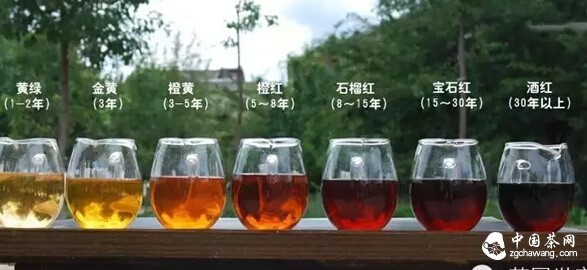
As the soup color is closely related to the temperature and humidity of the storage environment and the types of microorganisms, the above division is for reference only.
1.2 Transparency
Turbid Not clear Clear Transparent Transparent and bright Crystal clear
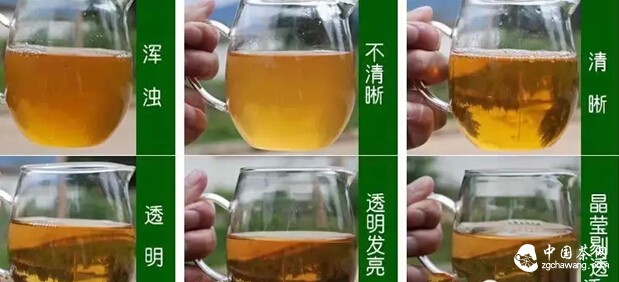
1.3 Viscosity
Watery Fluid Dense Thick Oily Viscous
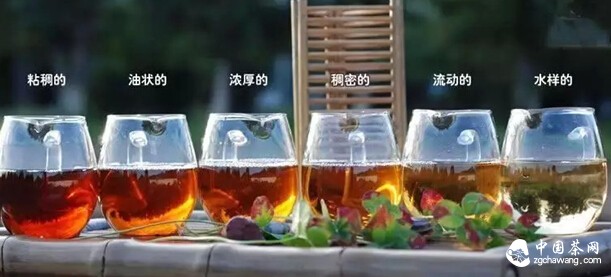
2 Smell the aroma
2.1 Immature:
Grassy smell—Similar to grass, produced when the tea is not roasted enough.
Raw green smell—The raw and astringent smell left behind when the tea is not sufficiently roasted.
Fresh fragrance—The fresh aroma of the plant itself from high-quality sun-dried raw tea that has not yet entered the natural fermentation stage.
Floral fragrance—A flower-like aroma produced when the oxidation degree of tea polyphenols is between 10%-25%.
Fruity fragrance—A fruit-like aroma produced when the oxidation degree of tea polyphenols is between 25%-40%.
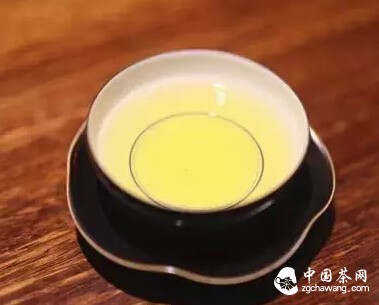
2.2 Mature:
Honey fragrance—The sweet honey-like aroma produced by raw Pu'er tea with a certain degree of natural post-fermentation.
Woody fragrance—A fragrance similar to脂粉 (lip powder) aroma, also called old wood fragrance, wood脂fragrance, or pine resin fragrance. It is produced by a large amount of wood脂in raw tea made from ancient tea trees over 200 years old with good ecological environment and few picking times. It is a rare aroma of ancient tree tea.
Aged fragrance—The old wood-like aroma produced by raw Pu'er tea after long-term storage.
Camphor fragrance—The aroma of linalool produced after the oxidation of wood脂.
Medicinal fragrance—The Chinese medicine-like aroma produced when wood脂is fully oxidized and mixed with the aged fragrance.
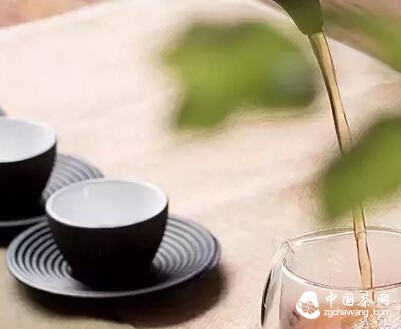
2.3 Off-flavors:
Smoky smell—The smell retained when smoke is absorbed by the tea leaves.
Burnt smell—The smell of partially burnt tea leaves.
Pan-roasted smell—The smell similar to green soybeans or roasted chestnuts produced when tea leaves are pan-dried immediately after fixation instead of being sun-dried.
Baked smell—The smell similar to roasted chestnuts produced when tea leaves are oven-dried immediately after fixation instead of being sun-dried.
Black tea smell—A smell similar to orange blossoms produced when tea fresh leaves are not spread out in time after picking, causing some red leaves and red stems.
Stuffy smell—The stale smell of being "covered" produced when tea fresh leaves are not sun-dried in time after fixation.
Moldy smell—The smell produced when tea is mildewed due to poor storage.
Foreign odor—Other non-tea odors absorbed by tea stored in a place with peculiar smells.
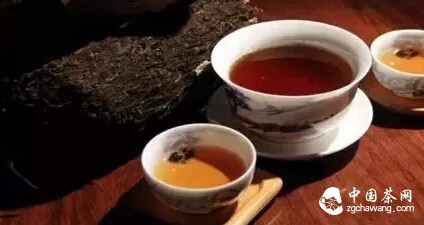
2.4 Aroma layering:
Single—The tea soup has only one very thin aroma.
Rich—The tea soup has multiple aromas mixed together.
Layered—The same brew of tea soup will have noticeably different aromas from hot to cold.
Changing—The aroma changes noticeably between each brew of the same tea.
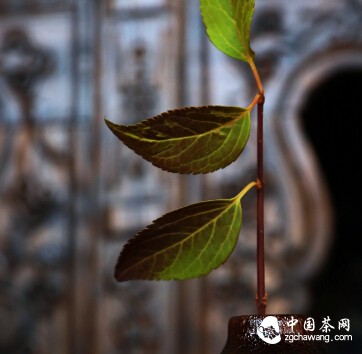
2.5 Aroma quality:
High and sharp—Sharp and lasting aroma.
Low and deep—A non-showy aroma.
Restrained—Rich, harmonious, and lasting aroma.
2.6 Special aromas:
Dry fungus aroma—Aroma produced by yeast.
Pectin aroma—A light sweet aroma similar to boiled tender corn, produced by pectin in tea leaves dissolved at high temperature. It is one of the characteristic aromas of high-quality ancient tree tea. Pectin also makes the tea soup thick and bright, but pectin dissolves大量in water only above 95°C.
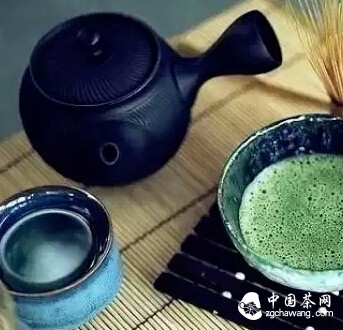
3 Taste the flavor
3.1 Basic tastes: Bitter Astringent Fresh Sweet Sour Salty
3.2 Soup body: Poor Thin Thick Full
3.3 Water feel: Rough Smooth Silky smooth
3.4 Throat feel: Dry Parched Sweet and甘润 Moist
3.5 Aftertaste: Long lasting Medium Short None
Tea lovers also need to know this:
Note 1: The seven elements that determine the quality of raw Pu'er tea are variety, soil, climate, tea garden ecology, tree age, tea-making工艺, and storage.
Note 2: A simple method to identify the post-fermentation ability of raw Pu'er tea: take 1g of raw tea, brew it with沸water at a ratio of 1:200 for one minute, then place the brewed tea soup in a transparent glass cup and let it stand for three or four days. If the tea soup becomes wine red and transparent, it indicates that the processing工艺of this raw Pu'er tea is normal, it has great post-fermentation potential, and will become甘醇with aging; if the tea soup becomes yellow-red and turbid, it means you have bought a绿茶化的(Green-tea-like) Pu'er tea, which will deteriorate with storage.

The three main reactions of raw Pu'er tea's post-fermentation are: 1. Colorless catechins polymerize into theaflavins and thearubigins; 2. Starch, cellulose, and lignin hydrolyze into sugars, esters, and alcohols; 3. Proteins hydrolyze into amino acids. The above detection method is based on the fact that the post-fermentation reaction speed increases急剧in an aqueous solution.
Note 3: For home storage of raw Pu'er tea, generally just avoid odors and store it naturally. For professional storage, a constant temperature of 28°C and constant humidity of 65% are more conducive to uniform and stable fermentation of raw tea, without mold or warehouse odor. The main external factor for the post-fermentation of raw Pu'er tea is humidity, and temperature is an important influencing factor. Generally speaking, post-fermentation is very slow when the relative humidity is below 45%. When the relative humidity is above 75% and the temperature is above 35°C, the tea is prone to mold. Therefore, for natural storage of raw Pu'er tea, a relative humidity of 45-75% and a temperature between 16-35°C are more appropriate. For storing whole件of tea, it is best to keep it 30 cm off the ground and 50 cm away from the wall.
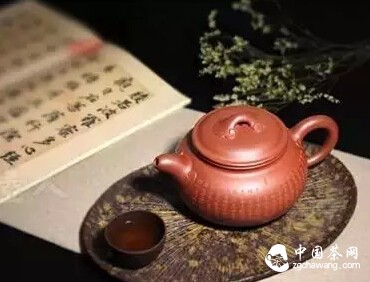
Disclaimer: No single article or book can cover all knowledge points. Therefore, a simple introductory article only gives a very simple outline and a rough understanding of the general picture. Everyone should not take it too seriously and apply it directly. Tasting is based on tea and experience, not on pictures and text. Relying solely on text and picture descriptions is very inaccurate; the most important thing is to open the tea and taste it, judging based on experience, skill, and knowledge.
Source: Tea Garden Family